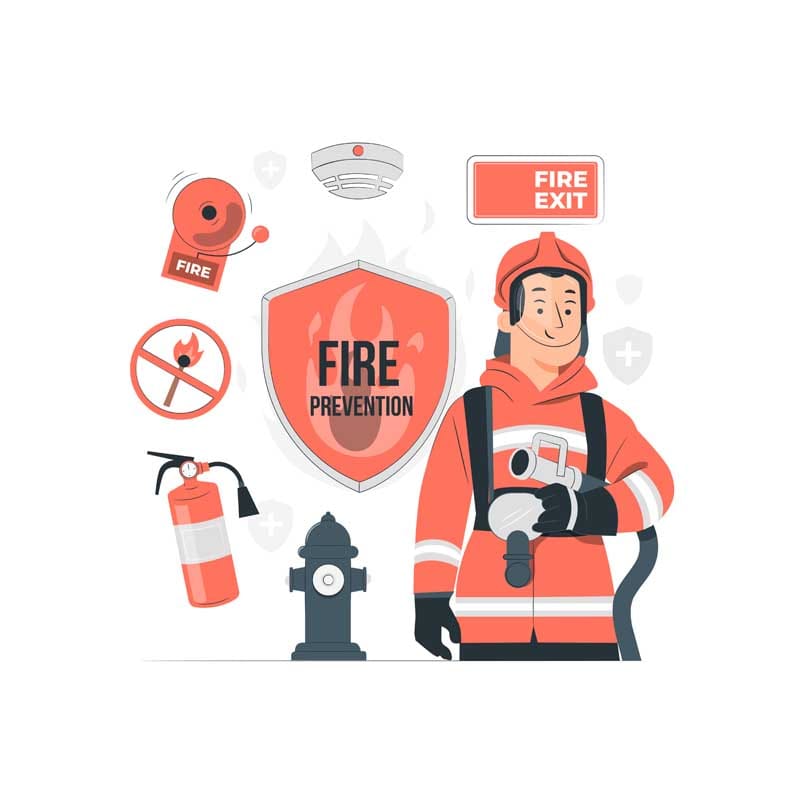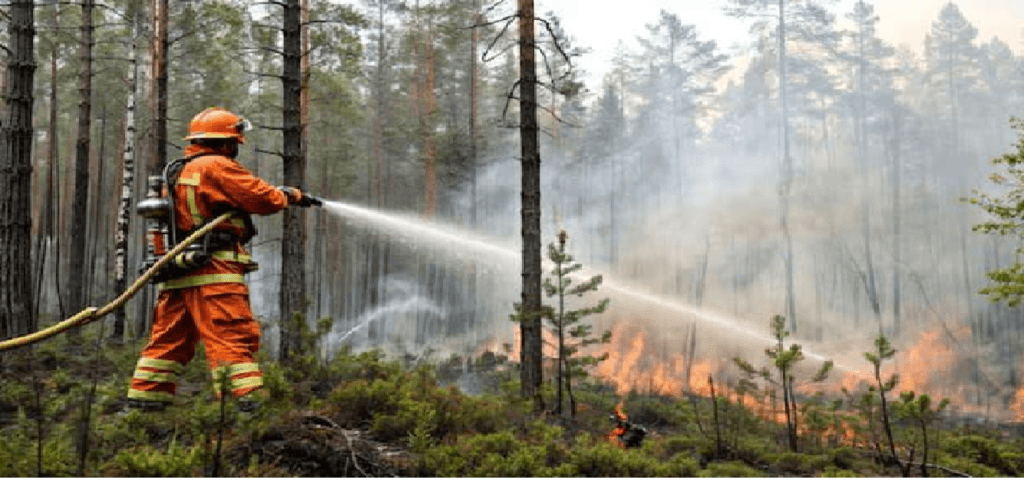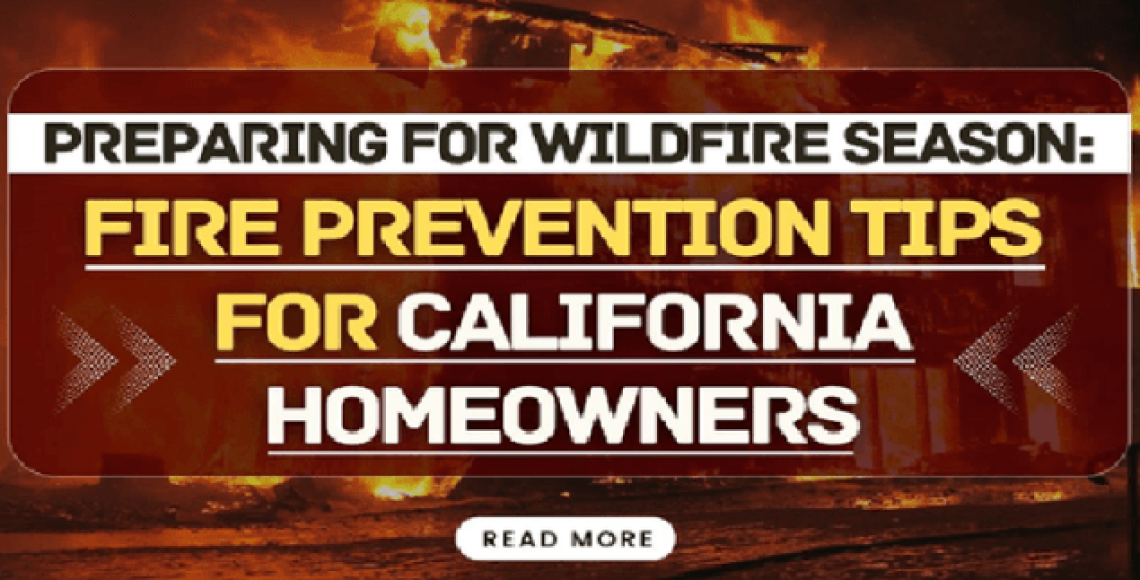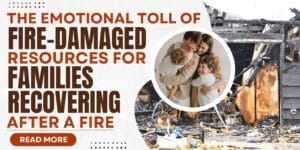California has seen a significant rise in wildfires over the past few years, making it crucial to prepare for wildfire season. Wildfire safety is quintessential as the consequences are grave. From causing air pollution to loss of property, and loss of life, there are so many things that happen due to wildfires.
The air quality is hugely affected due to wildfires. So if you stay in an area that is susceptible to wildfires, it is important to be aware of the fire safety tips and have the best wildfire preparedness tools ready.
Wildfire preparedness in case of emergency evacuation
In case your area is prone to wildfires, you should be prepared for emergency evacuation. There should be a go bag ready so that you can immediately leave in case of any unforeseen circumstances. All places that face such a peril have an evacuation route. Make sure that your car is outside the garage and in the direction of the route for evacuation. Do not use anything flammable such as gas stoves, candles, lighters, etc.
Always have gasoline handy so that you do not have to run to a gas station. Just make sure it is stored away from your home. Also, make certain that your fuel tank is always half empty so that if any emergency crops up, you can act instantly.
Home Protection Tips in Case of Wildfire
If you live in an area that is prone to wildfires, there are some home protection tips that you must follow:
Before the Fire
Create Defensible Space
Defensible space is a critical buffer zone that homeowners can have around their homes to mitigate danger associated with wildfire preparedness. California law mandates homeowners in high-risk zones to maintain defensible space up to 100 feet from their structures. This space is divided into two zones:
- Zone 1 (0-30 feet from structures): In this zone all dead vegetation is removed. The plants are kept well-watered; the tree branches are trimmed at least 10 feet from chimneys. Also, the flammable materials are kept away from the house.
- Zone 2 (30-100 feet from structures): Here the vegetation density is reduced. The grass is mowed regularly, and breaks are created using gravel pathways or driveways. This helps to slow the fire’s advance.
Use Fire-Resistant Materials

Fire-resistant construction and materials can significantly improve a home’s ability to withstand wildfires.
- Have metal, tile, or asphalt roofing if you stay in an area that is prone to fire. Do not go in for wood shingles.
- Use fire-resistant siding such as stucco, brick, or fiber cement.
- Seal the gaps around doors, windows, and vents with fire-resistant caulking.
- Use double-pane, tempered glass windows to minimize heat exposure and install fine mesh screens (1/8 inch or smaller) on vents to prevent embers from entering.
- Opt for non-combustible siding materials such as stucco, brick, or fiber cement, and treat wooden decks with fire-resistant coatings.
Maintaining Gutters and Roof
- Clean the gutters on a regular basis. There should be no dry leaves or debris that can catch fire.
- Install metal mesh screens (it can be 1/8 inch or smaller) over the vents so that there is no ember entry.
Build up an Emergency Water Supply
- Always have a garden hose that is long enough to reach different parts of the property.
- Install sprinklers on the roof and even around the home.
- If possible, maintain a pool or water tank. This can be an emergency water source.
Prepare For an Evacuation Plan
- You should have a bag that contains essentials. It should contain your medications, important documents, clothes, and even food.
- Have multiple evacuation routes and keep the vehicle fueled.
- Be aware of emergency alerts as well as community notifications.
Stay Informed and Ready
It is vital to stay informed about wildfire safety because it can spread rapidly:
- Local Alerts: You can sign up for emergency alerts via CAL FIRE, the National Weather Service, and county notification systems.
- Weather Conditions: You should stay abreast with Red Flag Warnings and high-wind conditions. All these increase fire risk.
- Community Resources: You must join the local fire safety programs and be a part of neighborhood preparedness groups.
Action to be Taken During Wildfire
If there is time on hand before the evacuation, you must shut all windows, doors, and vents. This will prevent embers from entering your home. Also, try to put any kind of flammable stuff away from the windows. Turn off the gas and propane supplies in your home. Keep the lights on so that your home is visible even when there is heavy smoke. In case you are trapped in your, do not venture to go out.Try to stay away from outside walls. Keep all doors closed but unlocked. Cover yourself with a wet blanket or clothing if needed.
After a Wildfire: Safety & Recovery

It is important to wait for official clearance before you return to your home. Check for hot spots (smoldering embers in trees, roofs, or decks). Always wear protective gear when you are cleaning up ash and debris. Get rid of spoiled food and check for gas leaks.
Wrapping Up
Wildfire season in California has become increasingly severe in recent years, posing significant threats to homes and communities. As a homeowner, taking proactive steps to mitigate fire risks can make all the difference in protecting your property and ensuring your family’s safety.
For the best wildfire preparedness, get in touch with the experts at Vortex Restoration. They will not only equip you with tools and tips to keep in mind if a wildfire incident happens, but they also help extensively in post-wildfire restoration.




